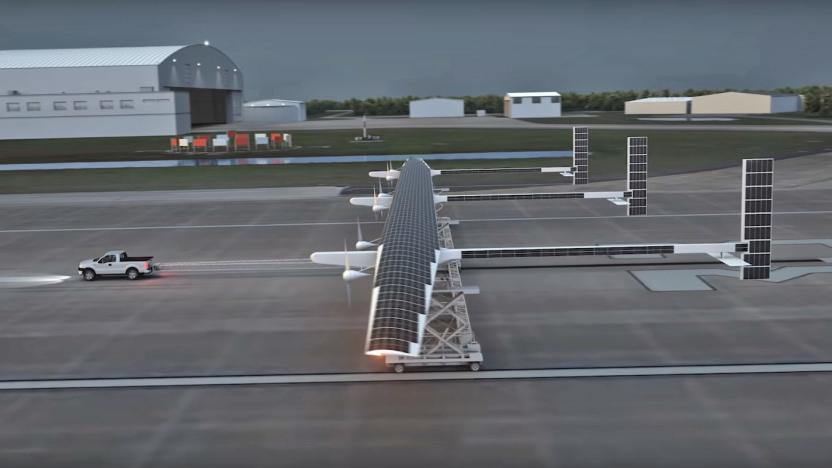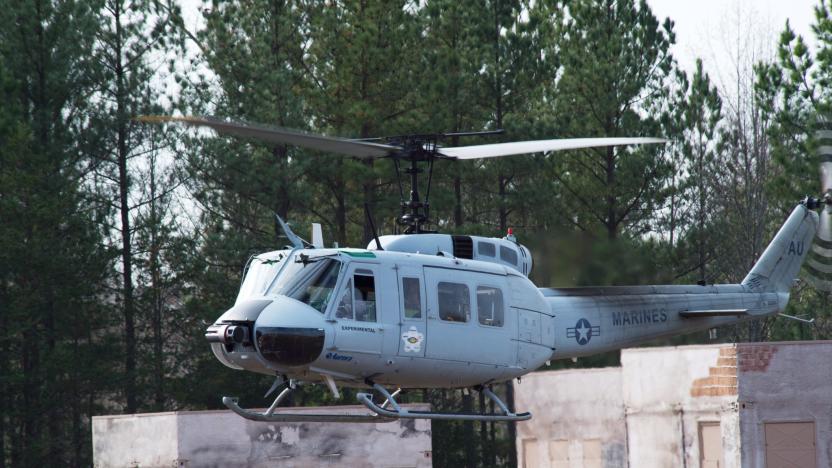auroraflightsciences
Latest

Boeing's solar-powered climate research drone takes flight in 2019
Aurora Flight Sciences, a subsidiary of Boeing that specializes in unmanned aerial vehicles, is gearing up to launch a solar-powered autonomous aircraft. The vehicle, called Odysseus, is designed for persistent flight at high-altitudes and will be used to perform climate and atmospheric research. Its first voyage is scheduled for the spring of 2019.

Boeing's prototype cargo drone can haul 500-pound loads
In the future, autonomy won't just mean you can relax in the passenger seat on your drive home from work. Driverless vehicles of all kinds are set to revolutionize the cargo industry, too, from delivering a pizza or dropping off an Amazon package, to hauling much larger shipments across continents and the high seas. Naturally, Boeing is one of many companies investing in cargo planes of tomorrow, and is keen to show off some of its early work in the form of a huge octocopter capable of carrying loads of up to 500 pounds (over 250kg). In less than three months, engineers at Boeing built and carried out successful test flights of the all-electric prototype, possibly (but unofficially) breaking a Guinness world record in the process.

Autonomous helicopter completes Marine resupply simulation
Drones have become a part of the modern battlefield, but what about autonomous full-size aircraft? Aurora Flight Sciences just successfully demonstrated its self-flying setup, the Autonomous Aerial Cargo Utility System (AACUS), enabling an older helicopter to fly itself at soldiers' requests. In the future, troops in the field could use this tech to order autonomous supply deliveries with nothing more complicated than a tablet.

DARPA successfully flew a model of its 24-fan electric plane
DARPA's experimental Vertical Takeoff and Landing (VTOL) aircraft, the XV-24A LightningStrike, cleared another developmental hurdle by completing its subscale flight tests in early March, according to its manufacturer, Aurora Flight Sciences.

Watch DARPA's autopilot system fly a turboprop plane
It'll likely take a long time before DARPA's autopilot system flies military planes on its own, but this latest demonstration proves that it works. Aurora Flight Sciences, the aviation company that's developing the technology for the agency, has successfully tested it on a Cessna Caravan turboprop aircraft. Aircrew Labor In-Cockpit Automation System or ALIAS is comprised of a robotic arm and a tablet-based user interface with speech recognition, among other components. When installed on a plane, it acts as the co-pilot in charge of flying the aircraft -- its human companions can chill and spend their time keeping an eye on the weather or looking out for any potential threats.

DARPA's wild 24-fan aircraft flies for the first time
DARPA's plan for a 24-fan VTOL aircraft (vertical takeoff and landing) sounds ridiculous on the surface, but it really does work -- at least, in testing. Aurora Flight Sciences has flown a small-scale demonstrator version of the LightningStrike vehicle to show that its aerodynamics and flight control systems are working. It's only a fifth the size of the full prototype arriving in 2018, but it proves that the concept is already viable. The bigger challenge may be translating this to the finished machine. The prototype is expected to haul at least 4,000lbs of cargo and travel at up to 400 knots (460MPH), which is no mean feat for brand new VTOL technology.





